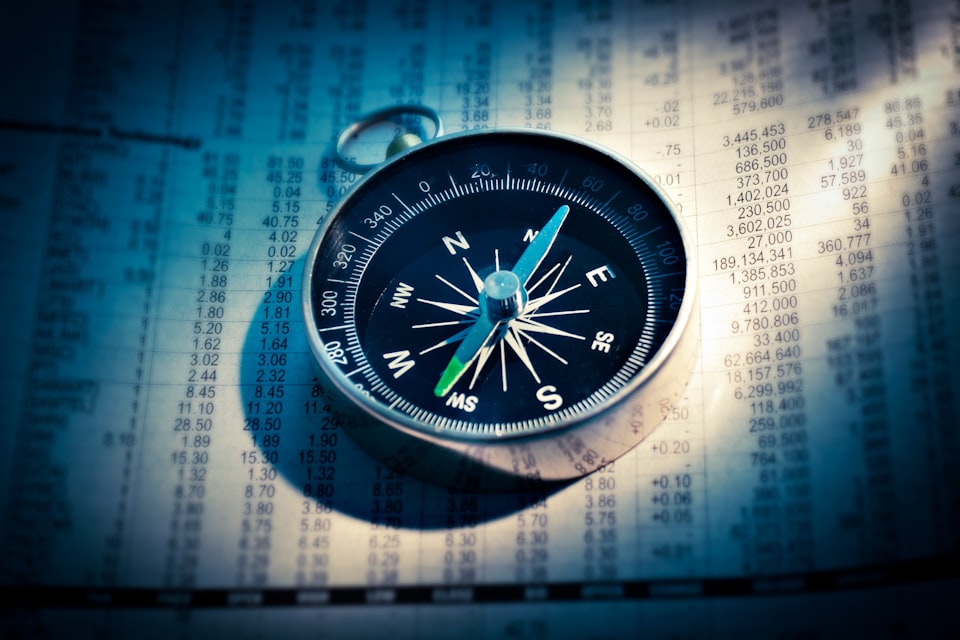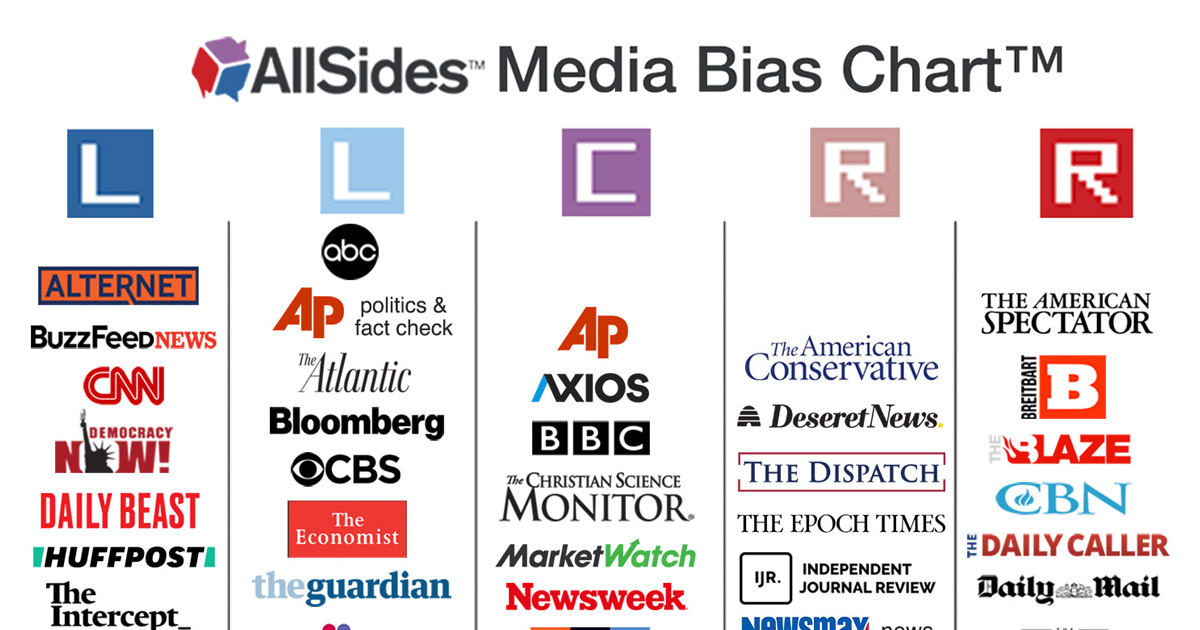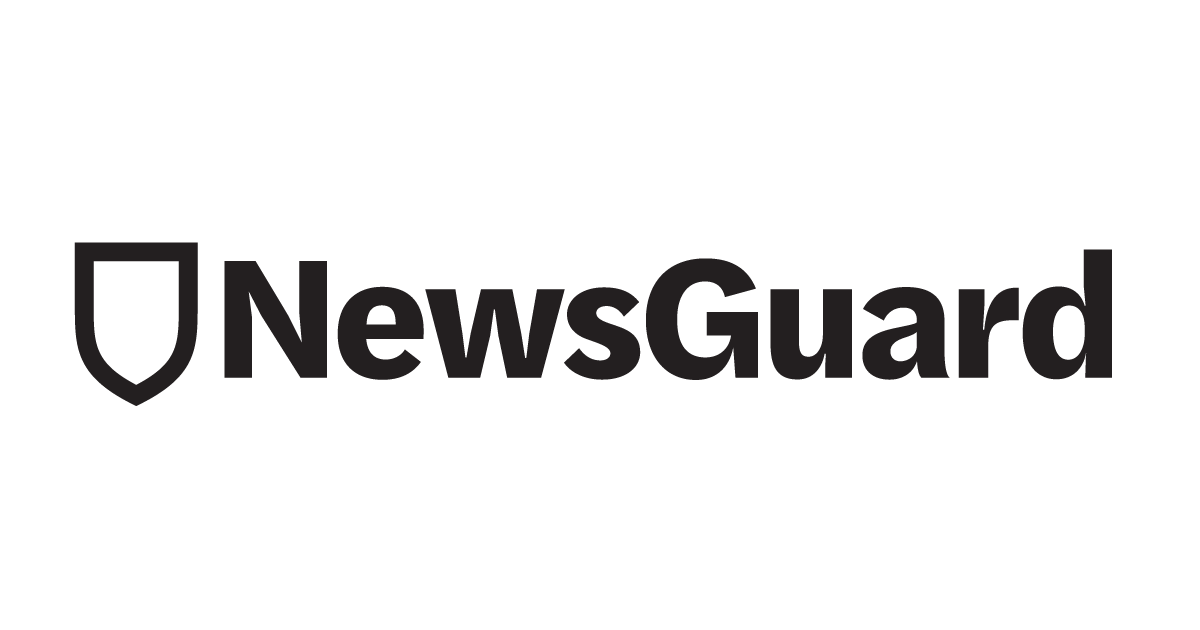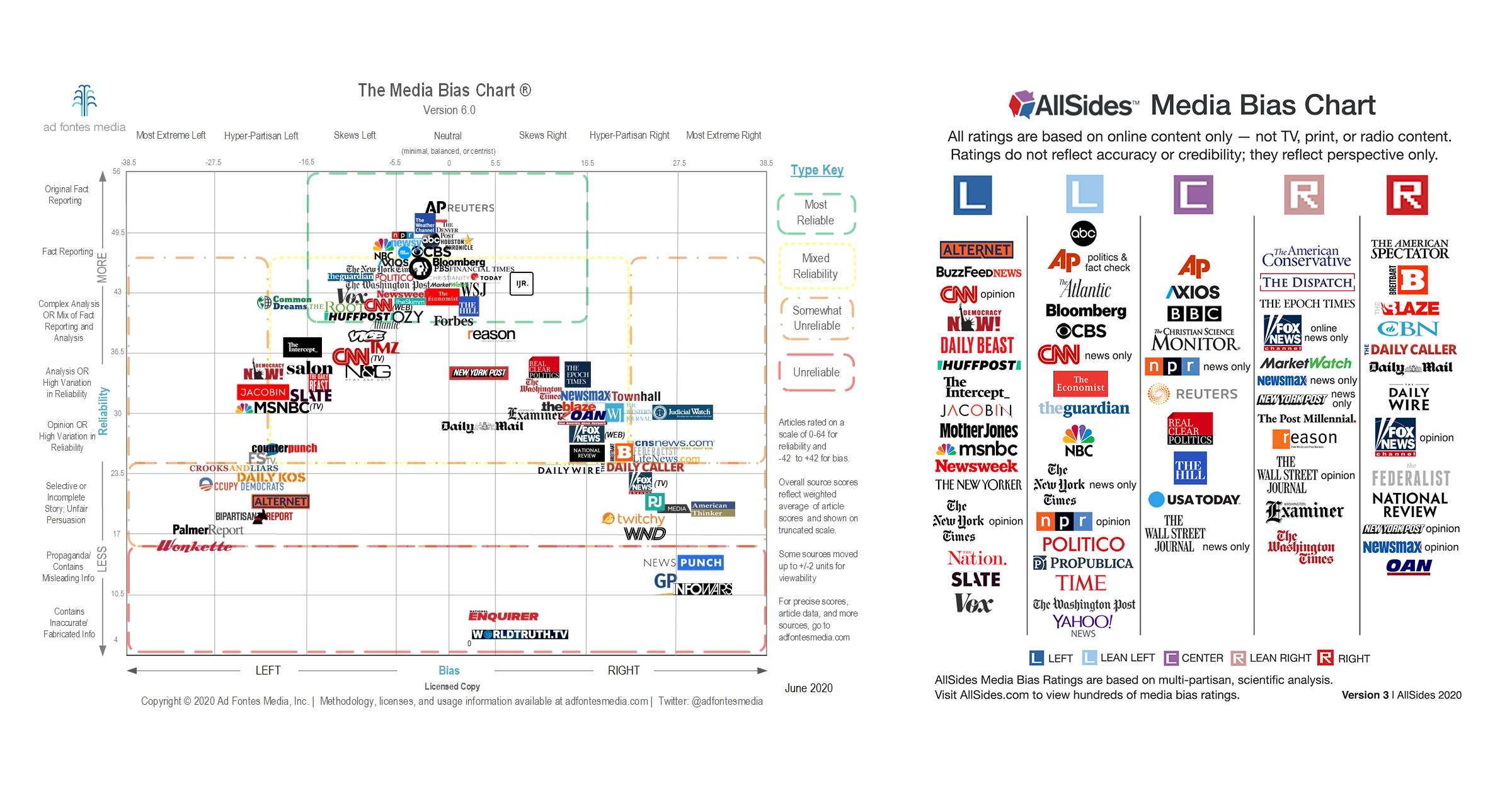media bias charts

Media bias charts attempt to show where different news sources fall on the spectrum of bias. In my last post, we saw that there are many types of bias beyond just "left" and "right." You can read that post here:

the chart
My favorite media bias chart analyzes only two types of bias: partisan bias and speculative bias. Here's what that looks like:

Go ahead! Take a second to find your favorite news station. There's an interesting phenomenon that happens with charts like these: people who prefer sources on the left side think it has a conservative bias, while people who prefer sources on the right side think it has a liberal bias. I think that's a great sign that this chart works.
Here's a link to the interactive chart so you can play with it yourself:

polarization in the largest news sources
Here's an interesting exercise: this shows only the news sources with audiences of 50,000,000 or more:

Here are the sources that have 100,000,000 or more in their audience:

It's getting a little lonely on the chart there. The only news sources with audiences of more than 100 million are (in decreasing order of size), the BBC, the New York Times, and Fox News.
Notice how there's a big empty space between the two on the left and the one on the right? That empty space represents the polarization of mainstream media. The best and easiest way to combat the polarization is to do what your mother taught you when you were younger: try to put yourself in someone else's shoes.
how to combat polarization
Since more reliable, factual information is found at the top of the chart, I suggest reading things that pull you upwards on the chart. Interestingly, when you do that, it also pulls you toward the center (unless you read Daily Mail which I don't think anyone should do).
Now, here's a zoom in on the best news sources:

As long as you stay within this area of the chart, I'd say you're safe. I have to admit that I really prefer the Wall Street Journal and Christianity Today, but I find both CNN and Breitbart impossible for me to consume without getting upset with the reporters. That tells me that I sit at about a +6.0 on the left/right political axis and I don't like going + or - 12 in either direction which really limits my options.
Thanks to this chart, I've tried to skew my consumption to be more factual and less analysis (even though there's nothing inherently wrong with reporters analyzing the news for us! They're much more qualified to do so than I am).
While trying out some new sources, I discovered NPR's spectacular selection of podcasts. This first one gives you all the top stories of the day in 10 minutes or less:

For those who really love staying up to date, minute by minute, this one gives the top stories of every hour, in 5 minutes or less:

You can find all their podcasts here. Most of them are very good:

I've also started reading and listening to Reuters which is very good at specifying which of their pieces contain speculation:

However, for anything relating to business or economics, I generally stick with the Wall Street Journal and the Fox Business report:


But I've started reading Forbes and The Economist to make sure I get something that's a little left of center at the same time. They've definitely helped me understand other people's views on economics, and I really haven't seen them cover anything that I considered politically divisive:


here's a secret
Okay, you've made it this far: I'm going to tell you a secret that most people don't know.
It won't kill you to hear something you don't like.
In fact, I found it was quite good for me. I was honestly scared to venture onto news sites made by people who don't vote the same way I do. I was afraid that one wrong click or reading one biased article would alter the course of my entire life onto a track doomed for destruction.
But in reality, It's done nothing but help me understand the people I'm surrounded by on a daily basis. It's increased my empathy and, as a by-product, also led me to consume news that's more fact-based than what I normally enjoy.
some other resources
Here's a nice fact-checking site with its own media bias ratings. They also have their own curated news provider:

Here's another one that provides a bias chart and its own curated news feed:

Here's one that has an app and browser extension:

the opposition
Now, here's an article about the drawbacks of charts and fact-checking sites from Poynter (which is generally critical of such attempts to broadly categorize news sources):

Here's a quote from the article:
But use them with caution. Political bias isn’t the only thing news consumers should look out for. Reliability is critical, too, and the accuracy and editorial standards of organizations play an important role in sharing informative, useful news.
Which is immediately followed by an advertisement for their own tools.
conclusion
Please check out some of the things I shared! There's nothing to lose and a lot to gain.
subscribe to get email updates and support my work
Click the link below or the subscribe button at the bottom of the page to support my work and get an email every time I make a new post!











